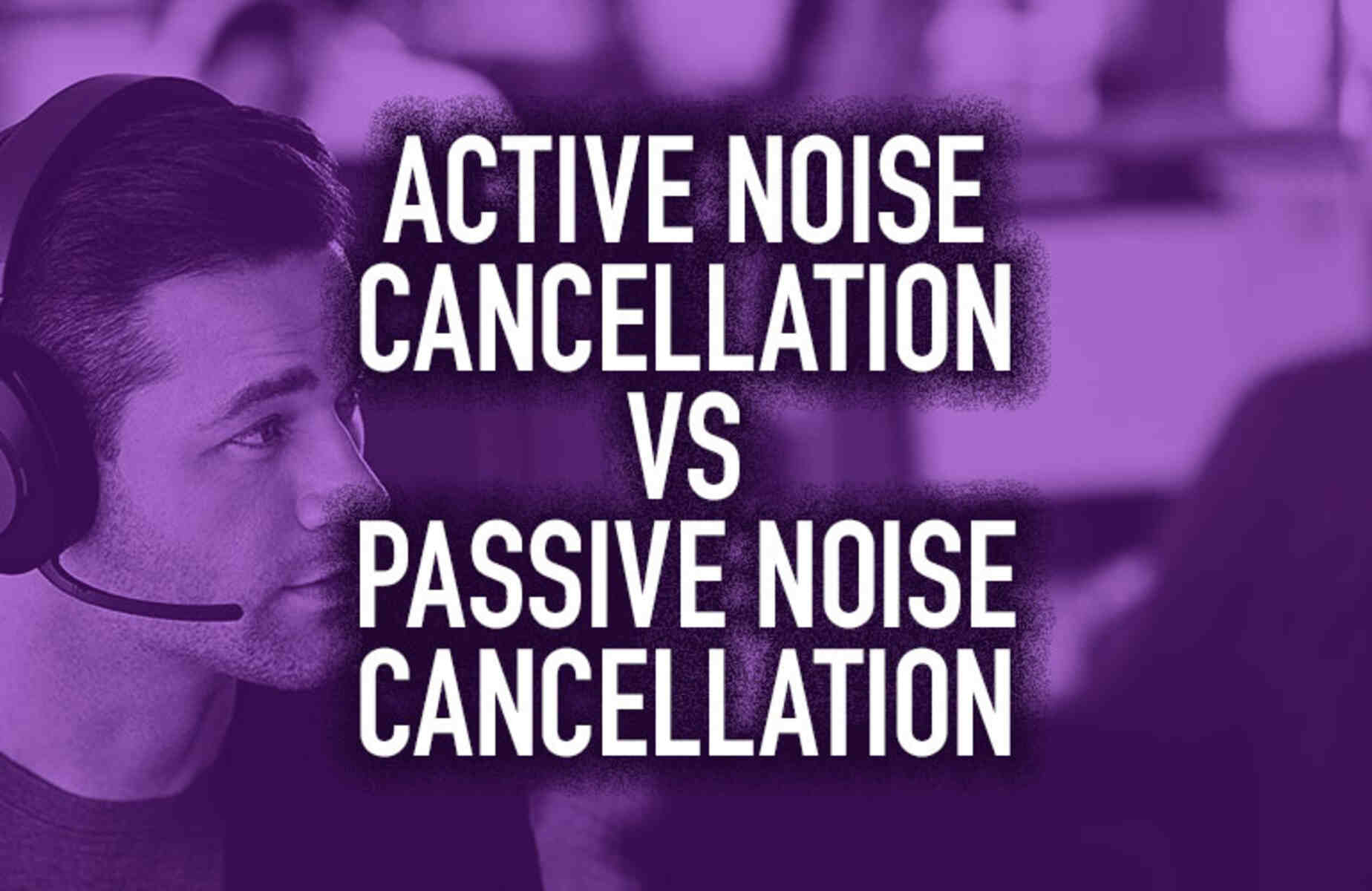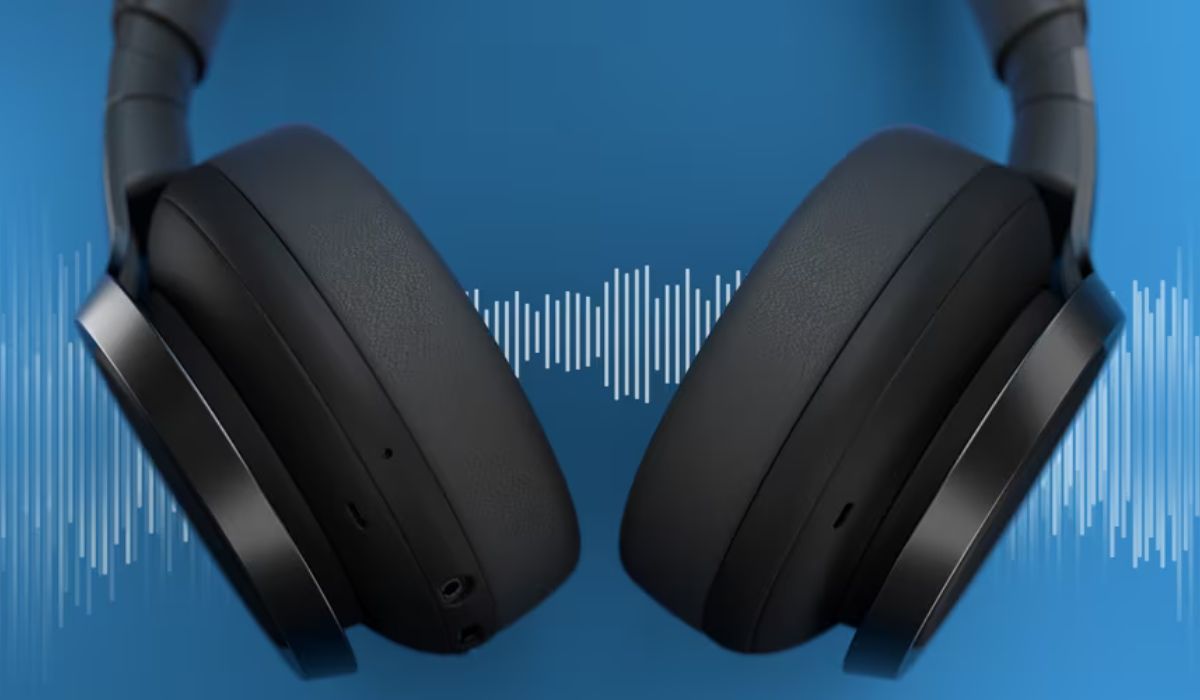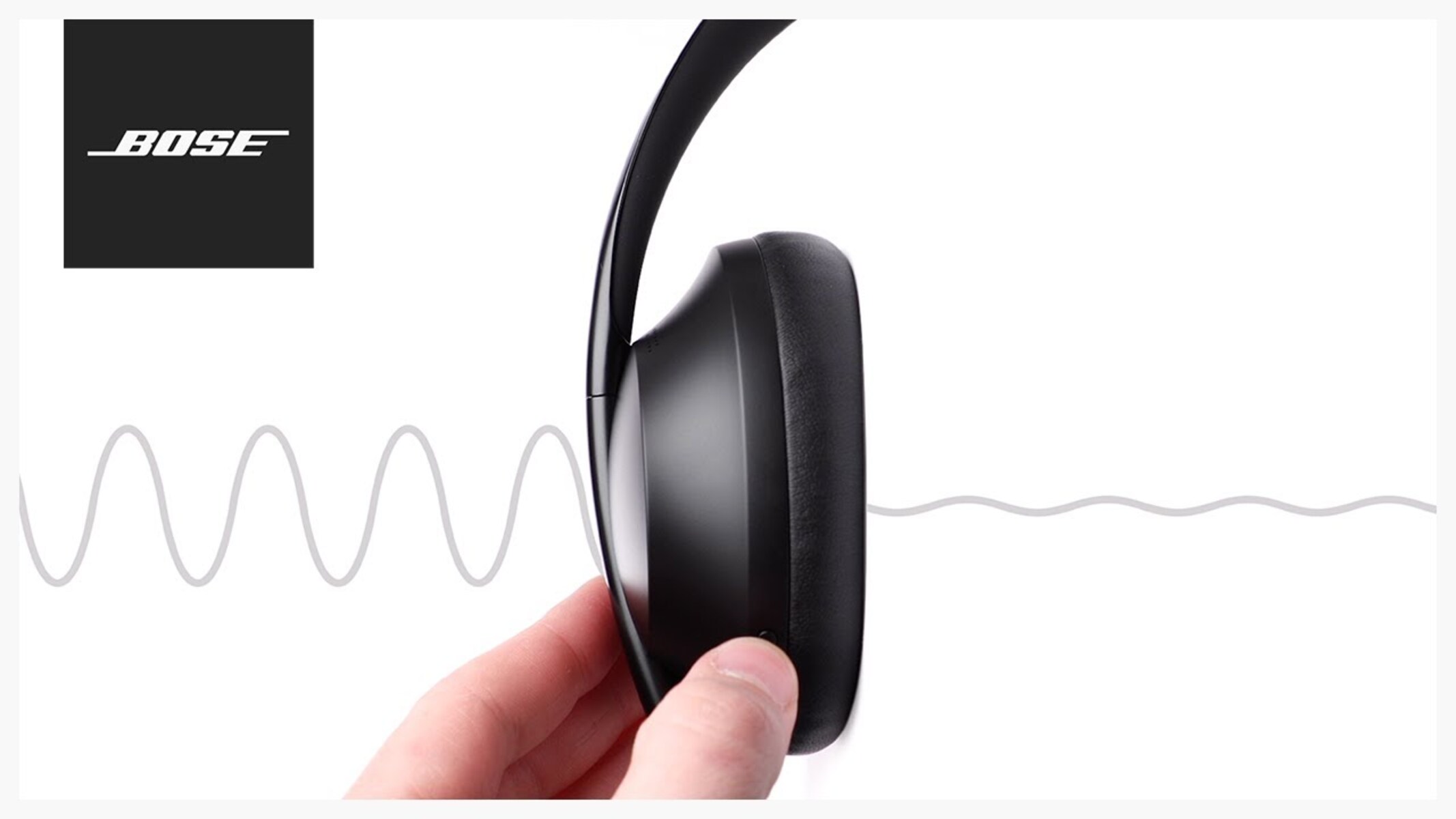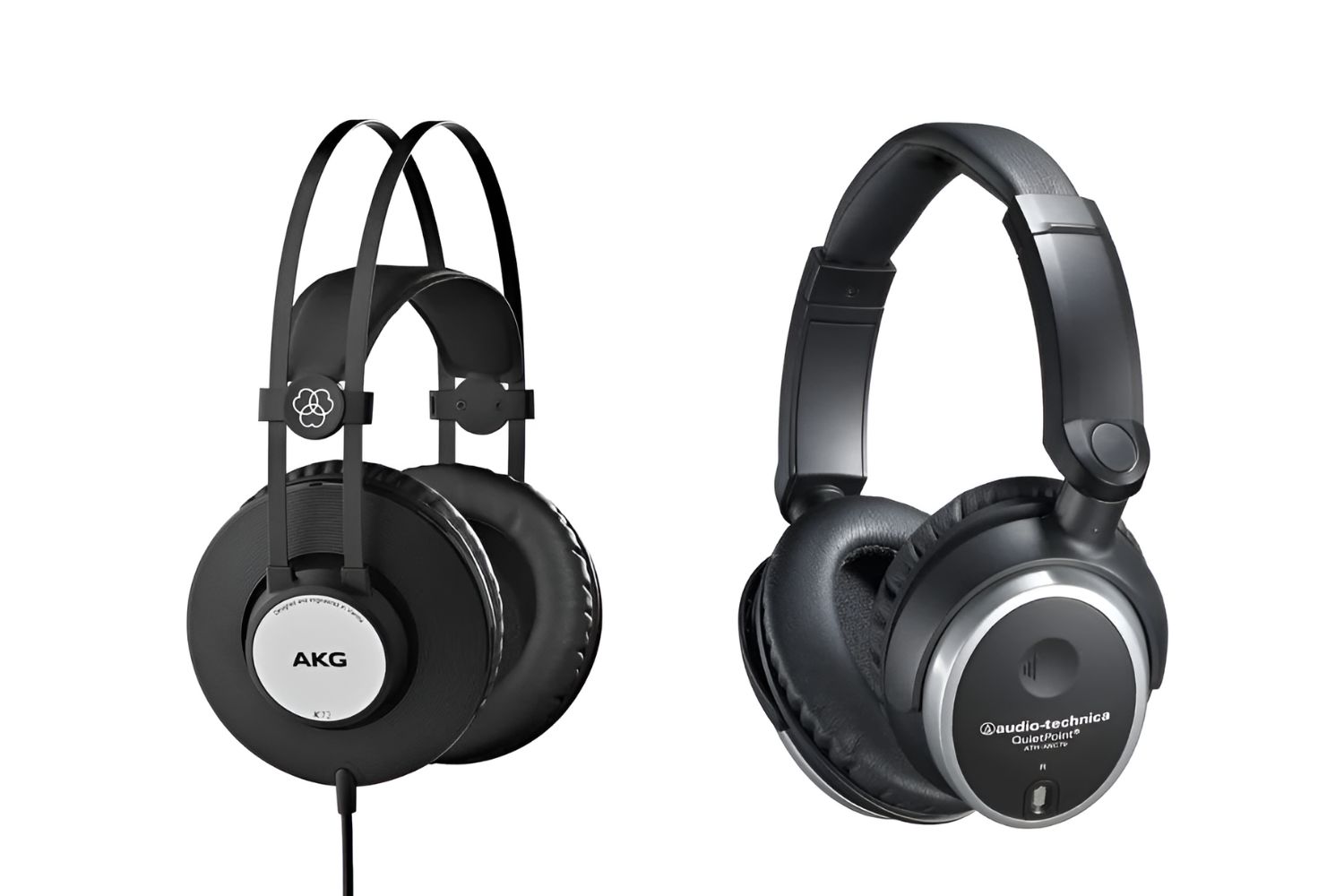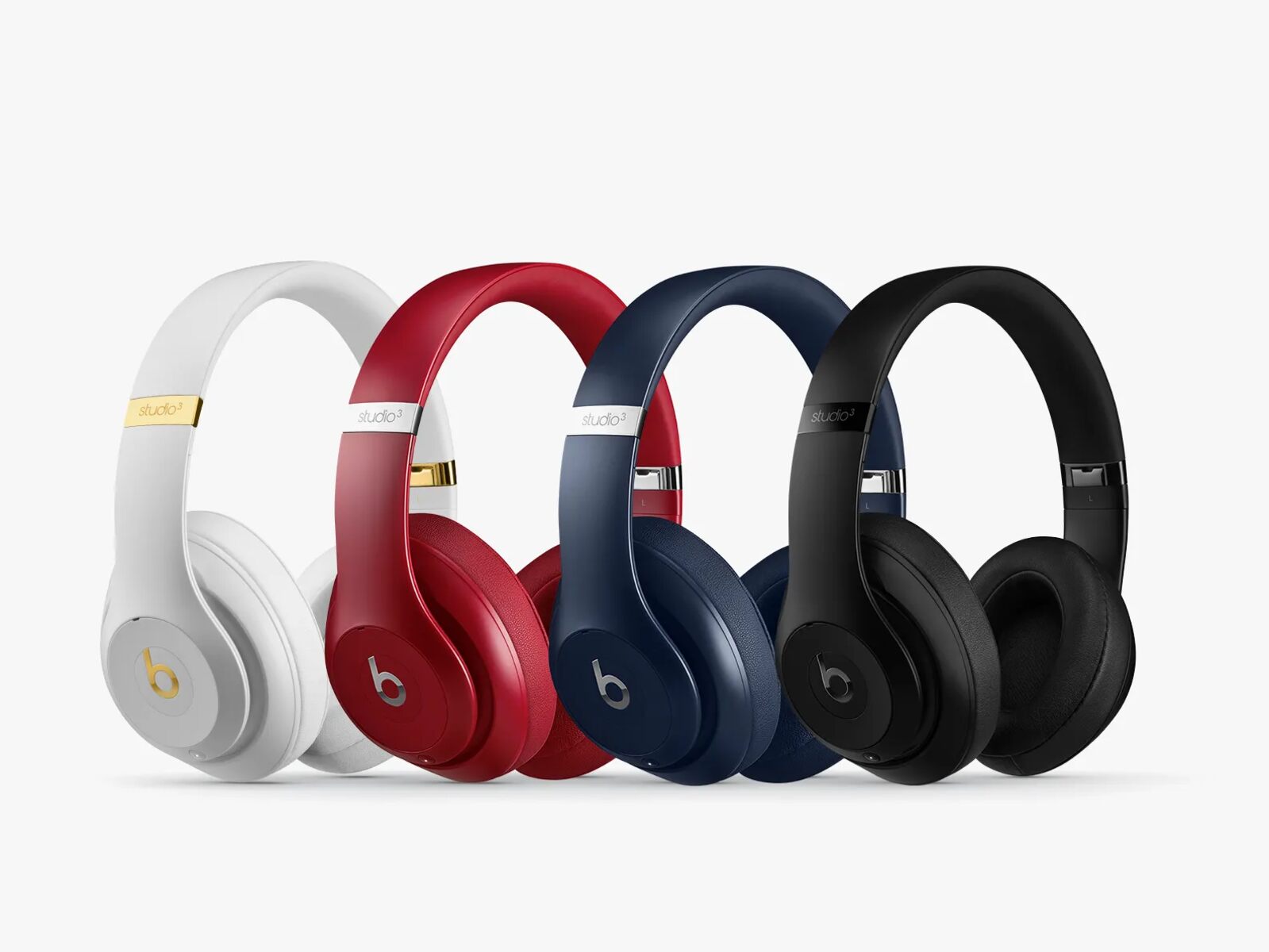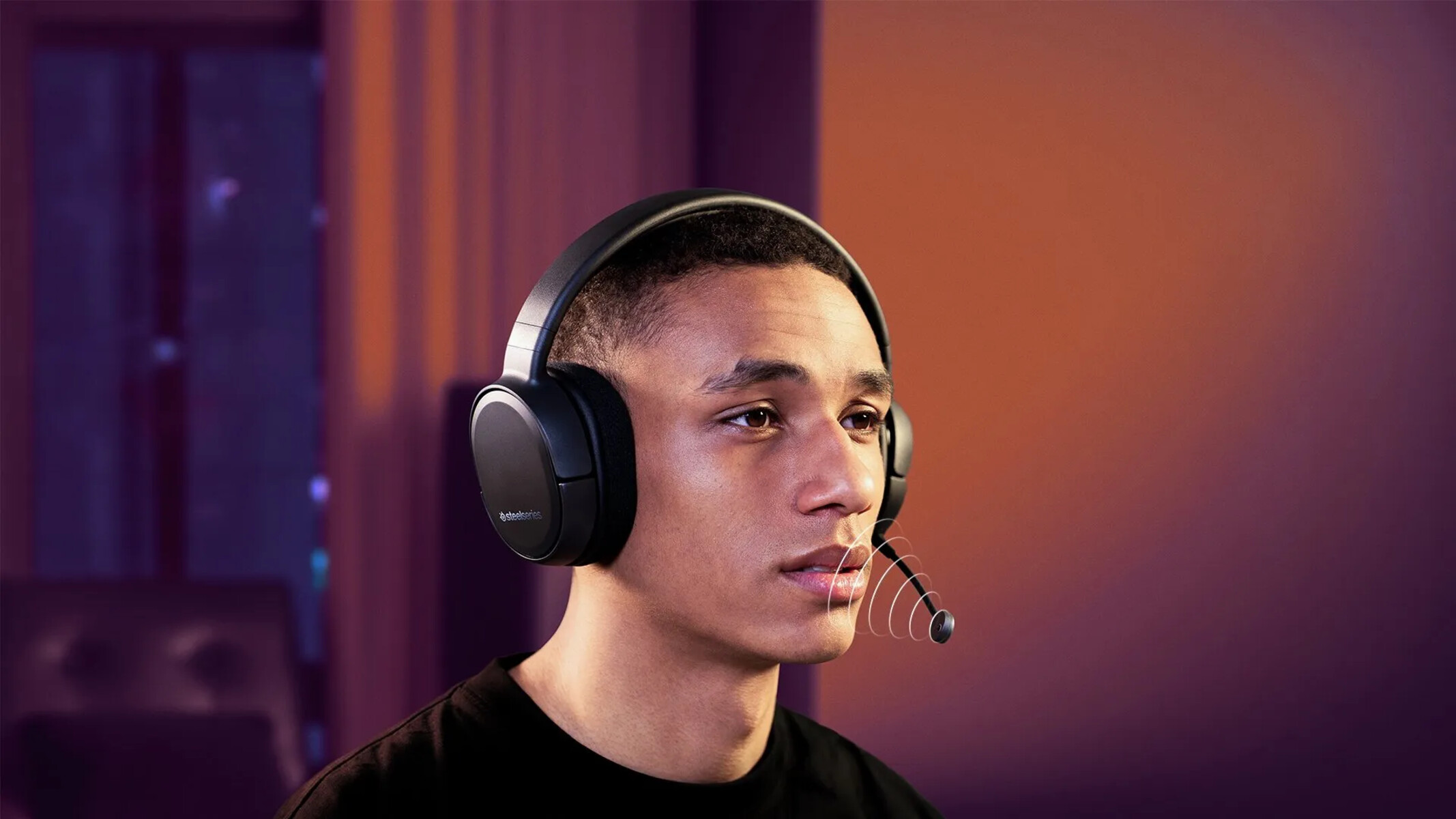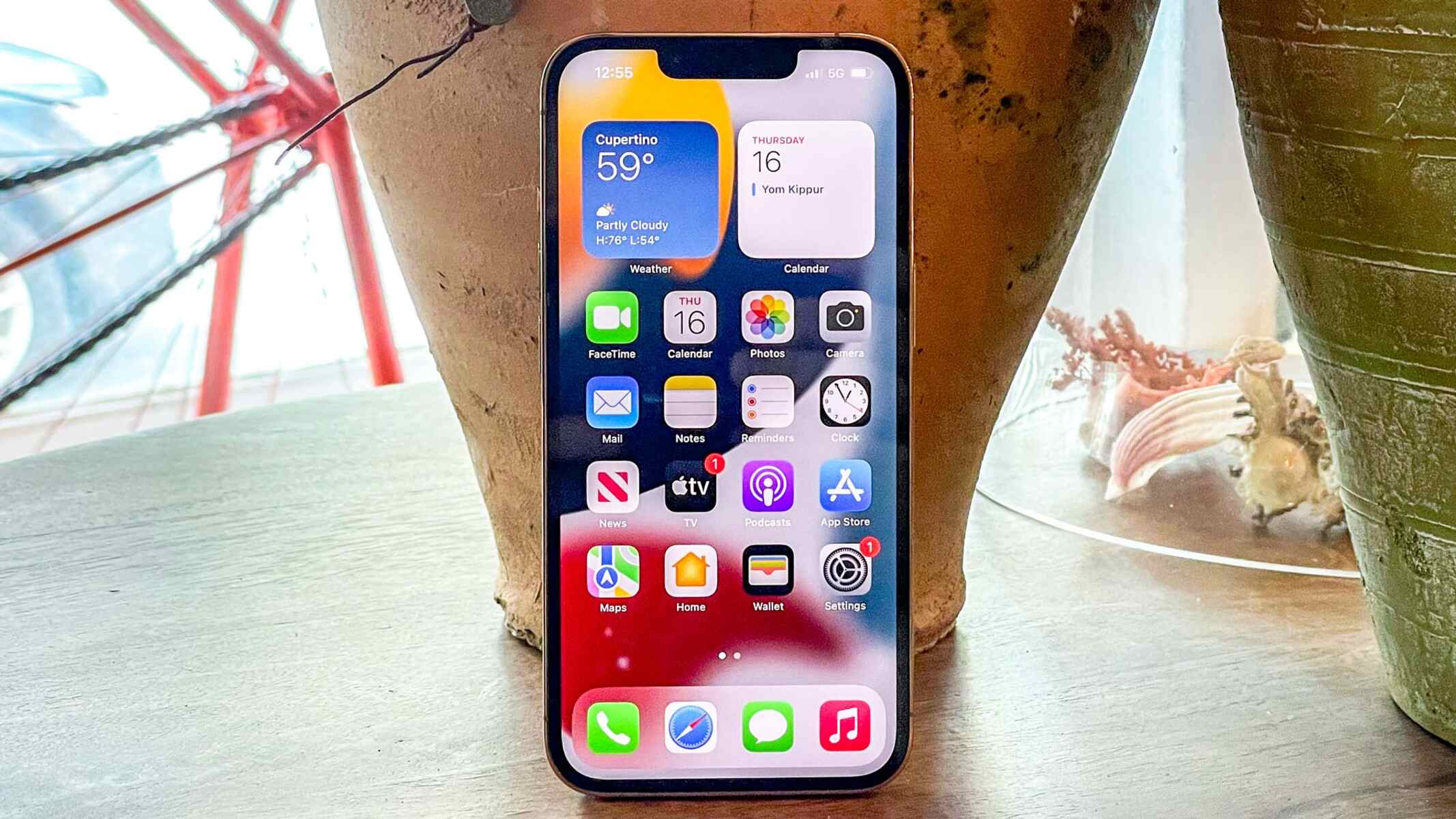Introduction
Welcome to the world of passive noise cancelling! In today’s fast-paced and noisy environments, finding a way to tune out unwanted sounds is essential. Whether you are trying to focus on work, relax during a long flight, or simply enjoy your favorite music without distractions, passive noise cancelling can be your go-to solution. In this article, we will explore what passive noise cancelling is, how it works, its pros and cons, and when it is appropriate to use. Additionally, we will discuss popular products that feature passive noise cancelling technology and provide some tips for maximizing its effectiveness.
Noise can be a major hindrance, affecting our productivity, concentration, and overall well-being. The constant chatter of coworkers, the rumble of traffic, and the clatter of dishes in a bustling café can all take a toll on our ability to focus. Luckily, passive noise cancelling offers a simple and efficient way to combat these distractions without the need for electronics or advanced technology.
Passive noise cancelling, as the name suggests, works by physically blocking or reducing the amount of external noise that reaches our ears. Instead of relying on electronic circuitry or active cancellation algorithms, it uses the design and materials of headphones or earbuds to create a barrier between you and the surrounding noise. This results in a more enjoyable and immersive audio experience, as you can fully immerse yourself in your favorite music or audio content without the interference of external sounds.
One of the advantages of passive noise cancelling is its simplicity. Unlike active noise cancelling, which requires power and often comes with a higher price tag, passive noise cancelling simply utilizes the physical properties of the headphones or earbuds. This makes it an affordable and widely accessible option for anyone looking to enhance their audio experience or create a quieter environment.
While passive noise cancelling may not completely eliminate all external sounds, it can significantly reduce them. This is particularly useful in environments with consistent background noises, such as airplane cabins, subway trains, or cafes. By minimizing these distractions, passive noise cancelling allows you to focus on what really matters, whether it’s getting work done, enjoying a movie, or simply finding a moment of peace.
Now that we have a basic understanding of passive noise cancelling, let’s take a closer look at how it works and explore its advantages and disadvantages, so you can decide whether it’s the right choice for you.
What is Passive Noise Cancelling?
Passive noise cancelling is a technique used to reduce or block out external sounds by physical means, such as the design and materials of headphones or earbuds. Unlike active noise cancelling, which relies on electronic circuitry and algorithms to counteract unwanted noise, passive noise cancelling creates a barrier between your ears and the surrounding noise without the need for any power source.
The principle behind passive noise cancelling is simple. It works by creating a physical barrier that prevents external sounds from reaching your ears. This is achieved through the design and construction of headphones or earbuds. The materials used, such as thick padding and sound-absorbing foam, help to absorb and dampen external sounds before they reach your ears.
By blocking or reducing ambient noise, passive noise cancelling allows you to enjoy your audio content without distractions. It enhances the listening experience by providing a more immersive and clear sound, as the unwanted background noise is minimized.
Passive noise cancelling can be found in various types of headphones and earbuds. Over-ear headphones, for example, typically feature large ear cups that fully cover the ears and provide a seal to block out external sounds. The padding around the ear cups helps to form a barrier and provides additional comfort during extended use.
In-ear headphones, or earbuds, use different techniques for passive noise cancelling. They often come with silicone or foam ear tips that create a snug fit in the ear canal, effectively sealing out external noises. This not only enhances the audio experience but also helps to prevent sound leakage, allowing you to listen at lower volumes without sacrificing clarity.
It’s important to note that passive noise cancelling is not as effective as active noise cancelling in completely eliminating external sounds, especially unpredictable or sudden noises. However, it is still highly effective in reducing consistent background noises, such as the hum of an airplane engine or the chatter in a busy cafe.
Passive noise cancelling is a great option for those who prefer a simpler and more affordable solution to block out unwanted sounds. It is also suitable for situations where active noise cancelling may not be practical or necessary, such as when exercising or engaging in outdoor activities where you still want to remain aware of your surroundings.
In the next section, we will delve deeper into how passive noise cancelling works, giving you a better understanding of the technology behind this innovative solution.
How does Passive Noise Cancelling Work?
Passive noise cancelling works by utilizing the design and materials of headphones or earbuds to block or reduce external sounds that may interfere with your listening experience. Let’s take a closer look at the key components and mechanisms that make passive noise cancelling effective.
1. Ear Cups or Ear Tips: In over-ear headphones, the large ear cups play a vital role in passive noise cancelling. These ear cups are designed to fully cover your ears, creating a seal to physically block out external noises. The padding around the ear cups helps to enhance this seal, ensuring maximum noise reduction. In in-ear headphones and earbuds, the ear tips, usually made of silicone or foam, are responsible for creating a tight fit in your ear canal, effectively sealing off external sounds.
2. Sound-Absorbing Materials: Passive noise cancelling headphones and earbuds often incorporate sound-absorbing materials within their construction. These materials, such as memory foam or specially designed padding, help to absorb and dampen external sounds before they reach your ears. The sound waves that carry unwanted noise are redirected or absorbed by these materials, allowing you to enjoy a clearer and more immersive audio experience.
3. Noise Isolation: Passive noise cancelling also relies on the concept of noise isolation. By creating a physical barrier, headphones or earbuds with passive noise cancelling technology prevent external sounds from entering your ears. The combination of the ear cups or ear tips and the sound-absorbing materials work together to minimize the amount of ambient noise that reaches your ears. This isolation contributes to a quieter listening environment, enhancing audio quality and clarity.
4. Fit and Seal: To achieve optimal passive noise cancelling performance, it is crucial to ensure a proper fit and seal. In over-ear headphones, a secure fit over your ears, with the ear cups completely covering them, helps to prevent external noises from leaking in. In in-ear headphones and earbuds, choosing the correct ear tips that provide a snug fit in your ear canal is essential. This tight seal creates a physical barrier that minimizes sound leakage and maximizes noise reduction.
It’s important to note that while passive noise cancelling can significantly reduce background noises, it may not completely eliminate sudden or unpredictable sounds. Unlike active noise cancelling, which uses electronic components to counteract and cancel out unwanted noise, passive noise cancelling focuses on physically blocking and reducing external sounds.
Additionally, the effectiveness of passive noise cancelling may vary depending on the quality of the headphones or earbuds and the specific design of their noise-cancelling features. Higher-quality and well-designed products tend to provide better passive noise cancelling performance, as they are engineered to optimize noise reduction and audio quality.
Now that we understand how passive noise cancelling works, let’s explore the pros and cons of this technology and help you decide when it is appropriate to use.
Pros and Cons of Passive Noise Cancelling
Passive noise cancelling offers several advantages and disadvantages that are important to consider when deciding whether it is the right technology for you. Let’s explore the pros and cons of passive noise cancelling to help you make an informed decision.
Pros:
- Affordability: One of the major advantages of passive noise cancelling is its affordability. Compared to active noise cancelling headphones, which often come at a higher price point due to the inclusion of electronic components, passive noise cancelling headphones or earbuds tend to be more budget-friendly. This makes passive noise cancelling accessible to a wider range of consumers.
- Simplicity: Passive noise cancelling is simple and straightforward. There are no batteries or electronics involved, which means you don’t have to worry about charging or replacing batteries. This simplicity also translates to ease of use. You just need to put on your headphones or earbuds, and they are ready to provide noise reduction.
- No Battery Dependency: Since passive noise cancelling does not rely on batteries, you don’t have to worry about running out of power or the need for recharging. This makes passive noise cancelling a reliable option when you need noise reduction for extended periods without access to a power source.
- No Added Weight: Passive noise cancelling does not add any additional weight to the headphones or earbuds. This can be advantageous, especially if you prefer lightweight and comfortable audio devices for prolonged use.
Cons:
- Less Effective on Sudden or Unpredictable Noises: While passive noise cancelling is effective in reducing consistent background noises, it may not be as effective in blocking sudden or unpredictable sounds. Since passive noise cancelling primarily relies on physical barriers and the design of the headphones or earbuds, it may not offer the same level of noise reduction for abrupt noises like loud voices or sudden blasts.
- Reliance on Physical Design: The effectiveness of passive noise cancelling is heavily dependent on the design and materials used in the construction of the headphones or earbuds. Cheaper or poorly designed products may not provide optimal noise reduction compared to higher-quality options.
- Variable Performance: The performance of passive noise cancelling can vary depending on factors such as fit, seal, and the specific environment in which you are using the headphones or earbuds. Achieving a proper fit and creating a tight seal is crucial for maximizing the noise reduction capabilities of passive noise cancelling devices.
- Less Versatility: Unlike active noise cancelling headphones, which often come with adjustable noise cancelling levels and transparency modes, passive noise cancelling is a fixed feature. This means you don’t have the flexibility to adjust the level of noise reduction to suit different environments or personal preferences.
Considering these pros and cons, it’s vital to evaluate your specific needs and preferences to determine whether passive noise cancelling is the right choice for you. In the next section, we will discuss situations where passive noise cancelling is most appropriate to help you make an informed decision.
When to Use Passive Noise Cancelling
Passive noise cancelling can be a useful tool in a variety of situations where you want to block or reduce external noise. Understanding when to use passive noise cancelling can help you make the most out of this technology. Here are some scenarios where passive noise cancelling is most appropriate:
1. Commuting: Whether you’re traveling on a noisy subway or braving the traffic during your daily drive, passive noise cancelling can provide a more peaceful and enjoyable commute. By reducing the constant rumble of engines and surrounding noises, passive noise cancelling allows you to unwind and focus on your preferred audio content.
2. Air Travel: The sound of the airplane engines can be quite loud and disruptive during flights. Passive noise cancelling headphones or earbuds can help you create a quieter and more immersive environment, allowing you to enjoy your in-flight entertainment or get some much-needed rest.
3. Office Environment: Open-plan offices can be filled with chatter, phone calls, and other noises that can distract you from your work. Passive noise cancelling headphones can help you stay focused and concentrate on your tasks by reducing the surrounding distractions, enhancing your productivity.
4. Study or Work Sessions: When you need to concentrate and study or complete important projects, passive noise cancelling can create a quiet and productive environment. By reducing background noises, it helps to create a more conducive space for deep work and concentration.
5. Libraries and Coffee Shops: Libraries and coffee shops are popular places for studying or remote work, but they can also be quite noisy at times. Using passive noise cancelling headphones or earbuds allows you to create your own personal oasis of calm amidst the hustle and bustle of these public spaces.
6. Fitness and Outdoor Activities: If you enjoy exercising or engaging in outdoor activities, such as jogging or hiking, you may still want to enjoy your favorite music or podcasts while remaining aware of your surroundings. In these situations, using passive noise cancelling earbuds can help reduce external noises without isolating you completely, allowing you to stay safe and connected to your environment.
7. Relaxation and Meditation: When you need a moment of relaxation or want to meditate, passive noise cancelling headphones can help create a serene and peaceful ambiance. By blocking out external disturbances, you can immerse yourself in soothing sounds or calming music, fostering a deeper state of relaxation.
Overall, passive noise cancelling is beneficial in any situation where you want to minimize external distractions, enhance your audio experience, or create a quieter environment. However, it’s worth noting that passive noise cancelling may not be suitable for situations where you need complete isolation or when sudden or unpredictable noises are a concern.
In the next section, we will explore some popular products that incorporate passive noise cancelling technology, giving you a sense of the options available in the market.
Popular Products with Passive Noise Cancelling Technology
Passive noise cancelling technology has become increasingly popular, and there are several reputable brands and products that incorporate this feature. Here are some popular products known for their effective passive noise cancelling capabilities:
1. Bose QuietComfort 35 II: Bose is renowned for its exceptional noise cancelling technology, and the QuietComfort 35 II is no exception. These over-ear headphones offer excellent passive noise cancelling by using a combination of comfortable ear cups, high-quality padding, and sound-absorbing materials. They provide a balanced audio experience and are ideal for long flights or daily commutes.
2. Sony WH-1000XM4: Sony’s WH-1000XM4 is another top-tier option for passive noise cancelling enthusiasts. These over-ear headphones feature exceptional noise isolation and comfortable ear cups that effectively block out external sounds. With impressive sound quality and advanced noise cancelling algorithms, they deliver an immersive listening experience in any environment.
3. Sennheiser Momentum True Wireless 2: For those who prefer the convenience of wireless earbuds, the Sennheiser Momentum True Wireless 2 stands out. These earbuds offer passive noise cancelling with their snug-fitting ear tips, which effectively block out external noises. With premium sound quality and a sleek design, they are a popular choice for on-the-go and fitness enthusiasts.
4. Apple AirPods Pro: Apple’s AirPods Pro is an excellent option for iPhone users seeking passive noise cancelling in a compact and wireless package. The ear tips create a secure seal, helping to minimize external noises and provide a better audio experience. With their integrated Active Noise Cancellation feature, they offer a combination of active and passive noise cancelling for optimal performance.
5. Audio-Technica ATH-M50x: The Audio-Technica ATH-M50x is a popular choice among professionals and audiophiles, known for its exceptional sound quality and passive noise isolation. These over-ear headphones feature large, comfortable ear cups that create a solid seal to block out external noises. They offer a balanced audio profile, making them suitable for critical listening and studio work.
6. Jabra Elite 75t: The Jabra Elite 75t is a top contender in the true wireless earbuds market, providing a combination of passive noise isolation and a secure fit. These earbuds feature a compact design and customizable ear tips that help to create a snug seal, effectively reducing external noises. They offer a well-rounded sound and are an excellent choice for those seeking compact and reliable passive noise cancelling earbuds.
These are just a few examples of the many products available that feature passive noise cancelling technology. When selecting your headphones or earbuds, consider factors such as comfort, sound quality, durability, and how well they fit your specific needs and preferences.
Before making a purchase, it’s always a good idea to read reviews, compare features, and try out different models if possible. This way, you can find the perfect product that not only offers reliable passive noise cancelling but also meets your overall audio and lifestyle requirements.
In the next section, we will provide some tips to help you maximize the effectiveness of passive noise cancelling and enhance your overall listening experience.
Tips for Effective Passive Noise Cancelling
To make the most out of your passive noise cancelling headphones or earbuds, here are some tips to enhance their effectiveness and improve your overall listening experience:
1. Choose the Right Fit: A proper fit is crucial for maximizing passive noise cancelling. With over-ear headphones, ensure that the ear cups fully cover your ears and provide a tight seal. For in-ear headphones or earbuds, experiment with different ear tips to find the ones that create a snug fit in your ear canal.
2. Optimize Sealing: Alongside finding the right fit, pay attention to the sealing of your headphones or earbuds. Proper sealing helps to create a physical barrier that blocks external noises. Adjust the positioning and tightness of your headphones or earbuds to enhance the seal and improve noise reduction.
3. Use Noise-Isolating Tips or Pads: Some headphones or earbuds come with specialized noise-isolating tips or pads that enhance passive noise cancelling. These tips or pads are designed to further reduce external noises and improve the overall effectiveness of the technology. Consider using them for an extra layer of noise reduction.
4. Minimize Sound Leakage: Sound leakage can detract from the effectiveness of passive noise cancelling. Ensure that your headphones or earbuds fit properly and create a seal that prevents sound from escaping. By minimizing sound leakage, you can maintain a clear and undisturbed audio experience while minimizing noise leakage to your surroundings.
5. Avoid Listening at High Volumes: Listening at high volumes not only poses a risk to your hearing health but also reduces the effectiveness of passive noise cancelling. Keeping the volume at a moderate level allows you to fully benefit from the noise reduction capabilities of your headphones or earbuds and reduces the strain on your ears.
6. Combine Passive Noise Cancelling with White Noise or Ambient Sounds: In situations where passive noise cancelling alone may not completely eliminate external noises, consider combining it with white noise or ambient sounds. Many apps or devices offer white noise or natural sounds that can help mask and blend with background noises, providing a more immersive and enjoyable listening experience.
7. Maintain your Headphones or Earbuds: To ensure optimal performance, regularly clean and maintain your headphones or earbuds. Clean the ear tips or pads, remove any debris, and store them in a safe and protected manner. Proper maintenance helps to preserve the quality of the passive noise cancelling features and prolong the lifespan of your audio devices.
By following these tips, you can enhance the effectiveness of passive noise cancelling and enjoy an immersive and undisturbed audio experience. Remember to consider your specific needs and preferences when selecting headphones or earbuds, as well as the specific environment in which you will be using them.
Now that we have explored the tips for effective passive noise cancelling, let’s wrap up this article by summarizing the key points discussed.
Conclusion
Passive noise cancelling is a valuable technology that allows you to enjoy your audio content without being interrupted by external distractions. Through the use of well-designed headphones or earbuds, passive noise cancelling creates a barrier that effectively blocks or reduces unwanted noise and enhances your listening experience.
We explored the fundamentals of passive noise cancelling, understanding how it works through physical barriers, sound-absorbing materials, and proper fit and seal. We also discussed the advantages and disadvantages of passive noise cancelling, such as its affordability, simplicity, and lack of battery dependency, as well as its limitations in blocking sudden or unpredictable noises.
We discovered various situations where passive noise cancelling can be beneficial, such as commuting, air travel, office environments, and relaxation or meditation. By implementing passive noise cancelling in these scenarios, you can create a quieter and more focused atmosphere for work, leisure, or personal well-being.
Furthermore, we explored popular products that incorporate passive noise cancelling technology, including the Bose QuietComfort 35 II, Sony WH-1000XM4, and Apple AirPods Pro, among others. These products provide excellent passive noise cancelling capabilities, catering to different preferences and lifestyles.
To maximize the effectiveness of passive noise cancelling, we provided useful tips, including selecting the right fit, optimizing the sealing, and avoiding listening at high volumes. These recommendations can help you get the most out of your passive noise cancelling headphones or earbuds.
In conclusion, passive noise cancelling offers a simple yet effective solution for reducing external noise and enhancing your audio experience. Whether you’re seeking a peaceful commute, a focused work session, or a moment of relaxation, passive noise cancelling can be a valuable tool to create a quieter and more immersive environment.
Consider your specific needs, preferences, and budget when choosing headphones or earbuds with passive noise cancelling features. By doing so, you can find the perfect audio device that aligns with your lifestyle and provides the noise reduction you desire.
Investing in passive noise cancelling technology can significantly contribute to your overall listening pleasure and well-being in today’s hectic and noisy world.









